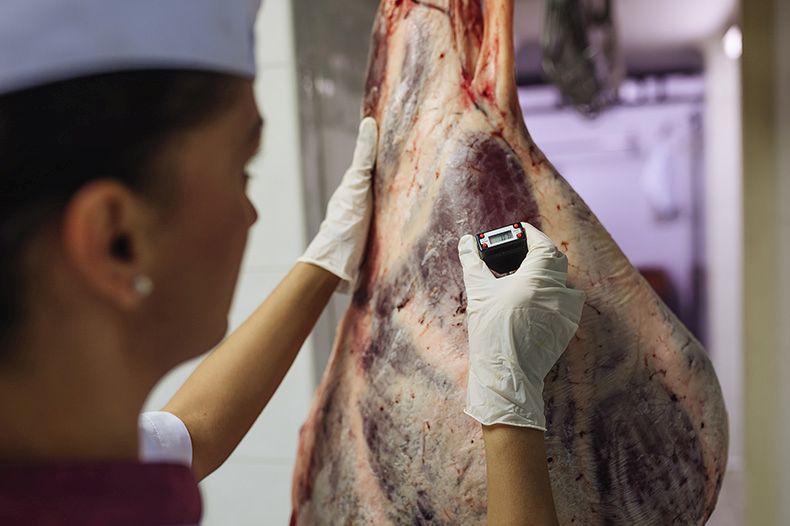Keep cold and carry on – not quite…
The concept of refrigeration is a relatively simple one. Store foods that are not yet ready to be consumed at a temperature low enough to preserve their optimal freshness and quality – until such a time when they are ready to be prepared or eaten.
According to the US FDA, refrigerators should typically be kept at temperatures that range between 0°C and 4°C (32°F and 40°F)i in order to safely preserve food without freezing. And the recommended temperature for freezers is -18°C (0°F) or colderii, based on the compromise of optimizing both food quality and energy consumption. The practical benefit of these temperature ranges encompasses a very broad range of food, maximizing the ability to store multiple food types in the same refrigeration unit.
The resulting challenge with this optimization strategy is that the quality of some foods can be compromised more than others, due to the fact that not all foods are best stored at the exact same temperature. And even though the ideal temperatures for different foods may vary by only a few degrees, those differences can make a huge impact on flavour, freshness and texture. This especially becomes a tricky issue in cold storage chains where disparate food types are being transported and stored together.
Here are five common foods and some science behind their ideal storage temperatures for quality and freshness:
Tomatoes: Cool, but not coldWhole Tomatoes produce and increase in flavour during the ripening stage when sugars, acids and multiple volatile compounds (amino acids and esters) interact with one another. But really, it’s these volatile compounds that act as the secret ingredient, responsible for giving tomatoes their delicious, aromatic flavour. And unfortunately they are most susceptible to adverse effects in standard refrigerator temperatures. Tomatoes stored between 0°C and 4°C will result in the breaking down of volatiles, causing not only the flavour to be negatively impacted, but also the texture and colour. Researchers have found that storing tomatoes on the cooler side of room temperature, between 13°C and 21°Ciii, will allow the tomato to continue to ripen off the vine without impeding the volatile compound interactions.
Fish: Just below freezing
The challenge of preserving fish without compromising flavour can be a delicate one that lies somewhere between standard refrigerator and freezer temperatures. While freezing will certainly preserve longevity, flavour and freshness can become compromised due to the crystallization of water particles, causing structural damage.
Food is usually considered fully frozen at -12°C or below and considered chilled above 0°C. A newer trend has emerged in recent years called ‘super-chilling,’ where the intent is to store food products like fish at temperatures just below their initial freezing pointiv. This way the potential for bacterial growth is stymied while crystallization from deeper freezing is almost entirely avoided. The ideal ‘super-chill’ temperature for fish falls in the range of -1°C to -7°Cv.
Ice Cream: The colder side of frozen
Ice cream should be kept frozen – no surprise here. But the ideal temperature for ice cream storage is on the colder side of the standard freezer range. -18°C or colder is recommendedvi for the simple fact that the colder the ice cream, the less vulnerable it is to thawing during temporary removals from the freezer.
Freezer burn occurs when the ice cream has temporarily left the freezer and moisture is permitted to travel from inside the product to its surface, due to thawing. Once placed back in the freezer, the surface moisture re-freezes, resulting in the formation of ice crystals that can ruin both the texture and flavour.
Cheese: The warmer side of cold
Cheese is a living organism, with enzymes and bacteria that need air and moisture to survivevii. The ideal temperature range for storing most cheeses is 2°C to 7°Cviii, which is just slightly warmer than the recommended temperature for refrigerators. This sweet spot protects cheese from the relative negative flavour effects from being stored too warm or too cold. Higher temperatures can lead to oil separation resulting in loss of flavour and bitternessix. And colder temperatures, even to the point of freezing won’t render the cheese inedible, but can cause a loss of flavour.
Aged Beef: Just above freezing
Dry-aging beef is a process that allows the enzymes contained in the muscle cells to slowly break down proteins, fats and carbohydrates into amino acids, fatty acids and sugars – which is where beef gets its flavour. This process also causes the meat to reduce its moisture content which helps concentrate the flavours. It’s similar to the effects of cooking, but the slow nature of dry-aging heightens the flavour beyond what just cooking can achieve.
The ideal temperature for aging beef falls between 0-4°C. While this aligns with standard refrigeration temperatures, precision and consistency throughout the entire aging process is key to ensuring the optimum flavour. If the temperature dips below freezing, the enzymatic breakdown processes cease. And if the temperature is elevated, the enzymatic processes will still continue, but microbial spoilage will occurx.
[i] “Are You Storing Food Safely?” April 9, 2014. US Food and Drug Administration Web Site. Web. Oct 25, 2017. https://www.fda.gov/ForConsumers/ConsumerUpdates/ucm093704.htm
[ii] “Are You Storing Food Safely?” April 9, 2014. US Food and Drug Administration Web Site. Web. Oct 25, 2017. https://www.fda.gov/ForConsumers/ConsumerUpdates/ucm093704.htm
[iii] Hard, Lindsay-Jean. “How to Keep Tomatoes Fresh Longer.” Aug 29, 2017. Food 52 Web Site. Web. Oct 25, 2017. https://food52.com/blog/13796-how-to-keep-tomatoes-fresh-for-longer
[iv] James, Christian. “-2°C to -12°C, Not Chilled But Not Frozen.” June 1, 2010. New Food Magazine Web Site. Web. Oct 25, 2017. https://www.newfoodmagazine.com/article/573/2c-to-12c-not-chilled-but-not-frozen/
[v] James, Christian. “-2°C to -12°C, Not Chilled But Not Frozen.” June 1, 2010. New Food Magazine Web Site. Web. Oct 25, 2017. https://www.newfoodmagazine.com/article/573/2c-to-12c-not-chilled-but-not-frozen/
[vi] “Tips on Storing & Handling Ice Cream.” International Dairy Foods Association Web Site. Web. Oct, 25 2017. http://www.idfa.org/news-views/media-kits/ice-cream/tips-on-storing-handling-ice-cream
[vii] “Tips on Storing Cheese.” American Cheese Society Web Site. Web. Oct 25, 2017. http://www.cheesesociety.org/i-heart-cheese/tips-for-cheese-lovers/
[viii] “Tips on Storing Cheese.” American Cheese Society Web Site. Web. Oct 25, 2017. http://www.cheesesociety.org/i-heart-cheese/tips-for-cheese-lovers/
[ix] Tenenbaum, David J. “Cheese: From Udder to your Stomach.” Oct 18, 2012. The Why Files Web Site. Web. Oct 25, 2017. https://whyfiles.org/2012/the-science-of-cheese/index.html
[x] Savell, Jeff W, PHD. “Dry-Aging Beef: Executive Summary.” Cattleman’s Beef Board. ©2008. Beef Research Web Site. Web. PDF. Oct 25, 2017. http://www.beefresearch.org/CMDocs/BeefResearch/Dry%20Aging%20of%20Beef.pdf











